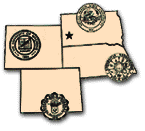Animal Science, Department of

Range Beef Cow Symposium
Date of this Version
December 1997
Document Type
Article
Abstract
Reducing costs while maintaining production is one way to improve the economic performance of a cow-calf operation. In large parts of the beef cattle production area, feed cost is a major factor in determining overall economic efficiency. Harvested forages and purchased feed make up the majority of the total feed cost. A major goal of our work has been to research cow-calf production systems that improve the economic and overall sustainability of the cow-calf operation. Given that feed costs are such an important component of most cow-calf operations we have focused our research on ways to reduce those costs without sacrificing production or by reducing costs relatively more than production .
The concept of matching nutrients available in forages with nutrient requirements of the cow has been recommended as a means to most efficiently utilize grazed forages (Adams et al. 1996, Valentine 1990, Vavra and Raleigh 1976). They identified complementary forages, calving date, and weaning date as ways to match forages with the nutrient needs of the cow. When the cow and the range forage are well matched the cow should receive most nutrients from grazed forages. Adams et al. (1996) suggested that genetic potential for milk production in the cow, and synchrony between the animal's nutrient requirement during lactation and the highest nutrient value in the forage determine how well the animal and forage resource match. We hypothesize that when nutrient requirements of the cow are matched with nutrient output in forages, purchased or harvested feed costs and labor can be reduced relatively more than production may be reduced.


Comments
Published for Proceedings, The Range Beef Cow Symposium XV December 9, 10 and 11, 1997, Rapid City, South Dakota.